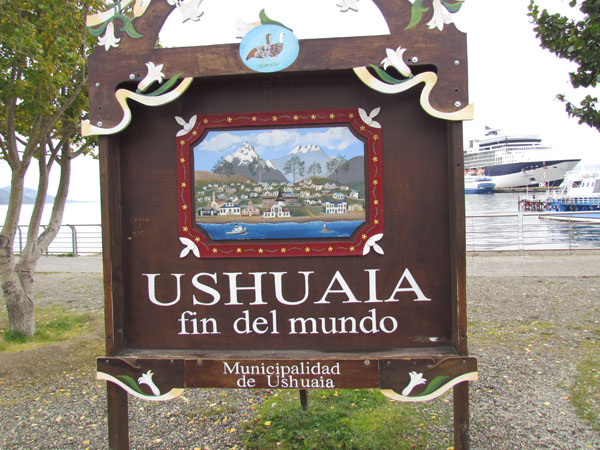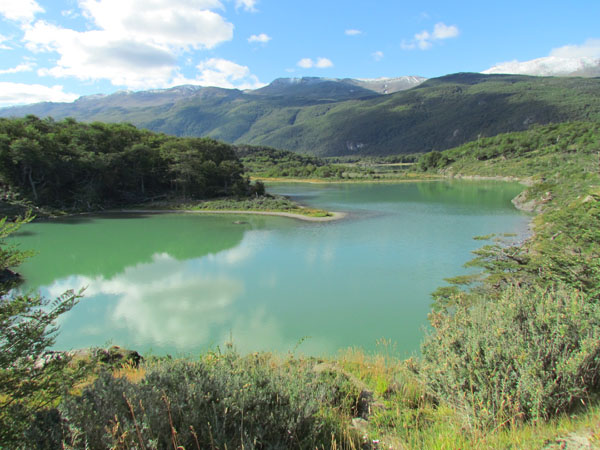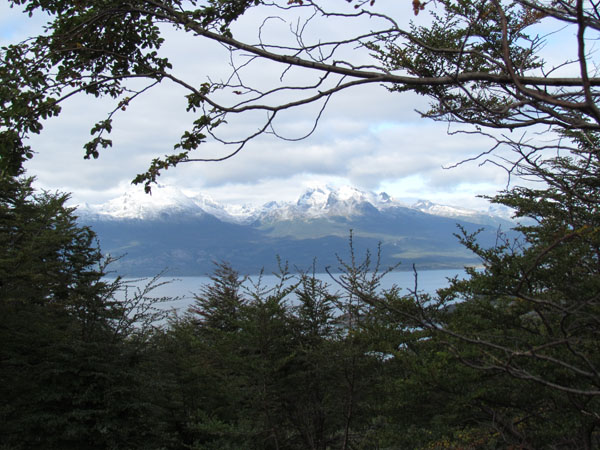Patagonia is one of those places that are preceded by their reputation.
Everyone painting it in a special and personal way even before visiting it, I, for example, imagined it as an infinite expanse of dull earth: the steppe.
But preparing the journey and especially once there I had to admit that there is much more to it than the steppe, a trip to Argentina in the discovery of its South makes one lose oneself among beautiful coastlines, to know a wide list of animals, mountains, lakes, woods and glaciers.
Something that is difficult for the imagination to dream up.
Argentina, huge and heterogeneous country of which Patagonia, cold and immaculate land that leads up to the "end of the world", has made of it an appealing and extremely interesting world-wide destination, and we'll talk about this Argentinean region, a corner of the country in stark contrast to the cosmopolitan Buenos Aires and the rural north.
Patagonia is a geographic region that covers the southern part of South America, divided between Argentina and Chile. It is more than 900,000 square kilometers of territory, in this post we will discuss the Argentinean part of Patagonia, a trip that started in Buenos Aires and ended at Ushuaia.
The Patagonia of Argentina is a gigantic region, many empty and limitless spaces whose principal points of interest that should not be missed out can be summarized in three basic stages:
Doing as I did, you can get off the bus from Buenos Aires from bus to bus passing through these three stages. The distances are long, we’re talking about 10, 20 or even 27 hours by bus, but a note of merit goes to the Argentinean buses which are the most comfortable and professional in all of South America and also among the most expensive of the continent.
Travelling by bus is usually cheaper than the other means of transport in Argentina, moreover, considering the extensive crossing over, the fact that you can travel at night allows you to sleep during the journey, save on a night in hostels and above all to have the day free and not lost between various airports.
Similarly if you are traveling during the day, this means of transport allows you to enjoy the places where you are going to before you get there through the wonderful views from the window, something that you would risk losing if you pass over these mystical and peaceful territories.
Clearly, doing it in this way, you have to have a bit of time available, in the case of the above route, no less than 20 days would be necessary.
A good alternative is to take the plane to Ushuaia and then go back by bus or vice versa.
The northern part of Patagonia Argentina, going down from Buenos Aires is mostly steppe. Therefore, if you are on the bus, you will see these stretches of sparse and shrubby vegetation that seem to go on endlessly. A great first stage, where to stop and stay overnight is Puerto Madryn, on the Pacific coast, which as a city in itself is nothing special, but on the other hand, is the entry point for the Valdes Peninsula.
The Valdes Peninsula is made up of 400 kilometers of steppe, perfectly preserved as world heritage. In addition to plunging yourself in an area that can at times seem surreal due to the absence of the work of man, you can enjoy the presence of many animals such as the guaranaco (species similar to the lama), the emu (bird very similar in size to the ostriches), the Martineta (birds similar to pheasants), the mara (animals similar to hares); as well as, on the coast, penguins, seals, elephant seals and sea lions.
And with a bit of luck you can watch a natural spectacle a bit bloody, that is, the killer whales that emerge from the sea to eat the seals.
My advice, though is to have binoculars or a good lens on the camera because some animals such as the seals remain several meters away from the catwalk where it is possible to stay and observe.
Moreover, if you go in the months from July to December, you can enjoy whale watching! The large animals, in fact, are in passing off the Valdes Peninsula from where the sighting tours depart; specifically from a place called Puerto Piramides. Or if you're lucky your can even sight them from Playa Doradillo, a beach near Puerto Madryn, with no need of the tour.
Obviously, apart from all that, you can always enjoy the beach .
Continuing our tour along the Patagonia in Argentina, you can reach the most southern city of the continent: Ushuaia, therefore, also called "End of the World". The bus trip is especially interesting because you have to cross the Magellan channel to enter the Tierra del Fuego, the island half Argentinean and half Chilean right at the end of the South American continent in front of Antarctica.
The bus is loaded into a deck boat and you are you can enjoy the half-hour crossing comfortably from upper deck and maybe surprise some curious dolphin following the boat.

Here the landscape changes drastically, you will leave behind the arid steppe to find yourself surrounded by lush forests covering various highlands. Besides Ushuaia overlooks the Beagle Channel that separates the main island of Tierra del Fuego from the other smaller islands in the southern part and you can navigate through special tours departing daily from the main port of Ushuaia.
In the area, the trekking that are absolutely not to be missed are the ones in the National Park of Tierra del Fuego and the Glacial Martial. In the National Park for a ridiculously low entrance fee you can walk for 16 km between the forest and the underbrush, flowing into lakes and other landscapes that look like pictures on the canvas of a painting. You can also see various animals such as for example foxes, beavers, woodpeckers ... In the Glacial Martial trekking, walking uphill for 5 km you can enjoy the view from high of Ushuaia and the Beagle Channel.

Do not forget, then, to ask for the stamp on the passport certifying that you have been to the end of the world. You can request for it at the information office in the city or within the National Park in a dedicated office.
Finally, you can climb up to El Calafate. This is a typical mountain town that, in my opinion, looks more like a European city than one of South America for its highly ordered structure and its many souvenir, sports fashion and not shops. Here, if you go in winter, you can have fun with all sorts of sports on snow and ice.
While throughout the year, from here you can go and visit, just 80 kilometers away, one of the most famous glaciers in the world: the Perito Moreno. The huge ice mass descends from the Andean Cordillera and flows majestically into Lake Argentino with a height of 60 meters and an extension of 5 km.
Its fame is due to the extremely peculiar natural phenomenon that interests it: this glacier, in fact, continues to grow but at the same time remains of the same extension. This is due to the fact that the ice on its edges crumble slowly. While the growth is imperceptible to the human eye, the fallings of the ice are spectacular and can be admired from the comfort of walkways built at its margins.

Another incredible natural beauty to do in only 2 ½ hours by bus from El Calafate is the National Park El Chalten that is the gateway to the Fitz Roy and Cerro Torre, two of the most famous Andean peaks: a trekking mecca.
Despite timelines for reasons we could not go there, I had 100% positive stories about this park.
Economically speaking Patagonia Argentina is very expensive as regards transport and accommodation, on the other hand, traveling by bus and looking for the right hostel, sleeping in dormitories with shared bathrooms, the aforementioned cities offer a wide range of hostels accessible to all budgets, you can stay in the budget that must still be over the thousand dollars per person.
But considering the natural beauty seen in this region a travel experience here is priceless, so it's worth the investment even if perhaps more expensive than what you'd expect when you think that you are traveling in South America.
As for the hostels we spent about $14/15 per head in average for hostel, in dormitories from 6 to more beds and shared bathrooms.
As regards the buses, prices vary quite a lot in relation to the company with which you travel, the type of seat you choose.
In our case to make the trip Buenos Aires, Puerto Madryn, Ushuaia, El Calafate we spent about $ 500 each.
And I must say that we were super careful to choose the most convenient solution for obvious reasons, and for example la cama we only took once opting for the more economic bus that will not be the most comfortable, but our budget was limited.
Excursions, entrance fees to parks, various and eventualities, dorm beds from 6 or more and shared bathroom, food, I must say that, we did not go in restaurants in Argentina and we have always cooked in the hostel .. in short, everything reduced to the bare minimum, in the twenty days that we stayed in Patagonia Argentina we spent about $2,500 in two (trip done in 2012, prices might have changed in the last years and I wouldn't be surprised if today is even more expensive than it used to be 4 years ago).
This post was written by Laura, the Stories from backpackers traveling in South America backpackers and also follow them on their Facebook page.
Disclaimer: In questo post, alcuni dei link forniti sono link di affiliazione, il che significa che posso guadagnare una commissione se si effettua un acquisto attraverso questi collegamenti. Tuttavia, ciò non comporta nessun costo aggiuntivo per te. Le commissioni che ricevo attraverso questi link di affiliazione aiutano a finanziare e supportare il mio blog, mantenendo così la sua indipendenza e la mancanza di sponsorizzazioni. Mi sforzo sempre di fornirti le migliori informazioni e consigli possibili, basati sulla mia esperienza e ricerca personale. Mi preme sottolineare che il tuo sostegno è fondamentale per mantenere vivo questo blog e continuare a fornirti contenuti di qualità. Grazie per il tuo supporto!
Se vuoi organizzare un viaggio su misura in Argentina organizzato da operatori locali contattami.
Anni di esperienza, prezzi competitivi, sicurezza in viaggio e turismo responsabile è quanto promettiamo!
Alcune immagini pubblicate sono state tratte da Internet, nel caso in cui, il loro utilizzo, violasse diritti d’autore, mandateci una mail a [email protected] e verranno immediatamente rimosse.